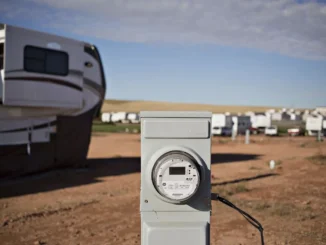
Community advocates are proposing new approaches to reducing the energy burden on low-income customers as part of Xcel Energy’s Minnesota rate case.
The Energy CENTS Coalition and Just Solar Coalition say Xcel’s proposed rate increase, currently under review at the Minnesota Public Utilities Commission, offers an opportunity to ease the energy burden on BIPOC communities while rewarding less energy consumption.
Xcel is asking for a 21.2% increase in electricity rates over the next three years. For residential customers, the rate would jump to above 24%. The commission will continue to take public comments until early next year and decide on the case in June.
Energy CENTS Coalition Executive Director Catherine Fair has proposed that Xcel offer a 35% discount to customers earning 50% or less of the state median income. The deal would apply to the first 300 kilowatt-hours they use each month, saving roughly 92,000 ratepayers $2 to $12 a month.
“We’re targeting a population that doesn’t have a lot of options for any rate increase mitigation or energy burden mitigation,” Fair said. “And low usage customers tend to be low-income customers.”
A similar Minnesota Power program the commission approved this year had an overwhelming response, with more than 12,000 applications, she said.
Sign up for Energy News Weekly
Get the most important energy news of the week delivered directly to your inbox.
Such a discount would have an immediate impact on many customers who are covered by other low-income programs. She said only 1 in 5 Minnesotans who qualify for the Low Income Home Energy Assistance Program receive assistance. Other programs exist through the state, nonprofits and Xcel, which offers one called “Power On” that lowers customers’ energy burden to 3% of their income. Yet many customers fail to enroll in the programs for any number of reasons, Fair said.
University of Minnesota associate professor Gabe Chan, submitting comments on behalf of the Just Solar Coalition, proposed a different solution in which Xcel would create a new, special rate category for low-income customers.
Most utilities, including Xcel, generally charge residential customers the same rate regardless of their ability to pay. But they often charge variable rates for business customers, who also pay less than residential ratepayers.
“There’s a lot of room to consider introducing additional differentiation in the residential class,” Chan said. “There is nowhere in [state] statute that says that the whole residential class should be treated as a single class.”
Giving disadvantaged ratepayers a break on their bills is in line with what utilities do for commercial and industrial clients, Chan said. “We argue that if you think about low-income consumers, you can make a similar case that there are non-energy benefits, like reducing energy burden, improving health and safety, reducing disconnections and creating more stable communities.”
In a written response to state regulators, Xcel said it supports the Energy CENTS Coalition proposal and that the 35% discount could be incorporated into its rate structure. Nicholas Martin, Xcel’s director of strategic outreach and advocacy, called the idea a “practical way” to deal with barriers to energy efficiency programs.
“It addresses an urgent need — the challenge the Company’s low-income customers are facing with housing burden and energy burden in a time of high inflation and ongoing instability from the pandemic,” Martin wrote.
The company has concerns, though, about Chan’s idea. In Xcel’s testimony, Martin wrote that “creating intra-class differentiation within the residential customer class” would be much more complex than improving the reach of accessibility of energy payment assistance programs. He said no other utility had attempted to offer lower residential rates to low-wealth customers but suggested a group of stakeholders outside the rate case process could study the issue.
Chan’s research shows Black Minnesotans have a higher rate of energy insecurity than their counterparts in other states. “Not only do we have greater disparities than in other states, but we also have worse outcomes for minority groups in Minnesota,” Chan said. “When you break down the data, you see disparities in the state and many communities struggling.”
Such disparities are not new and have been called by University of Minnesota professor Samuel Myers the “Minnesota Paradox.” While the state consistently ranks among the best places to live for White people, it scores among the worst for Black people and other communities of color.
Rate hikes before the state regulators are automatically deemed contested cases and assigned to an administrative judge, who collects testimony and data before making recommendations to the Public Utilities Commission. Utilities typically come to a settlement with intervenors and then the commission decides whether to accept it. A decision is expected in Xcel’s case by June 2023.
Questions or comments about this article? Contact us at editor@energynews.us.



